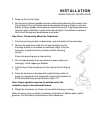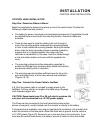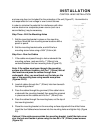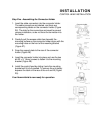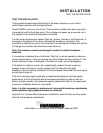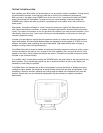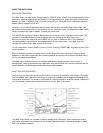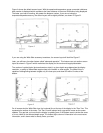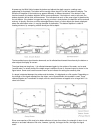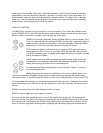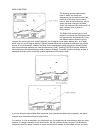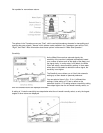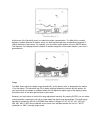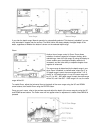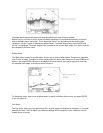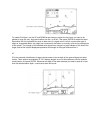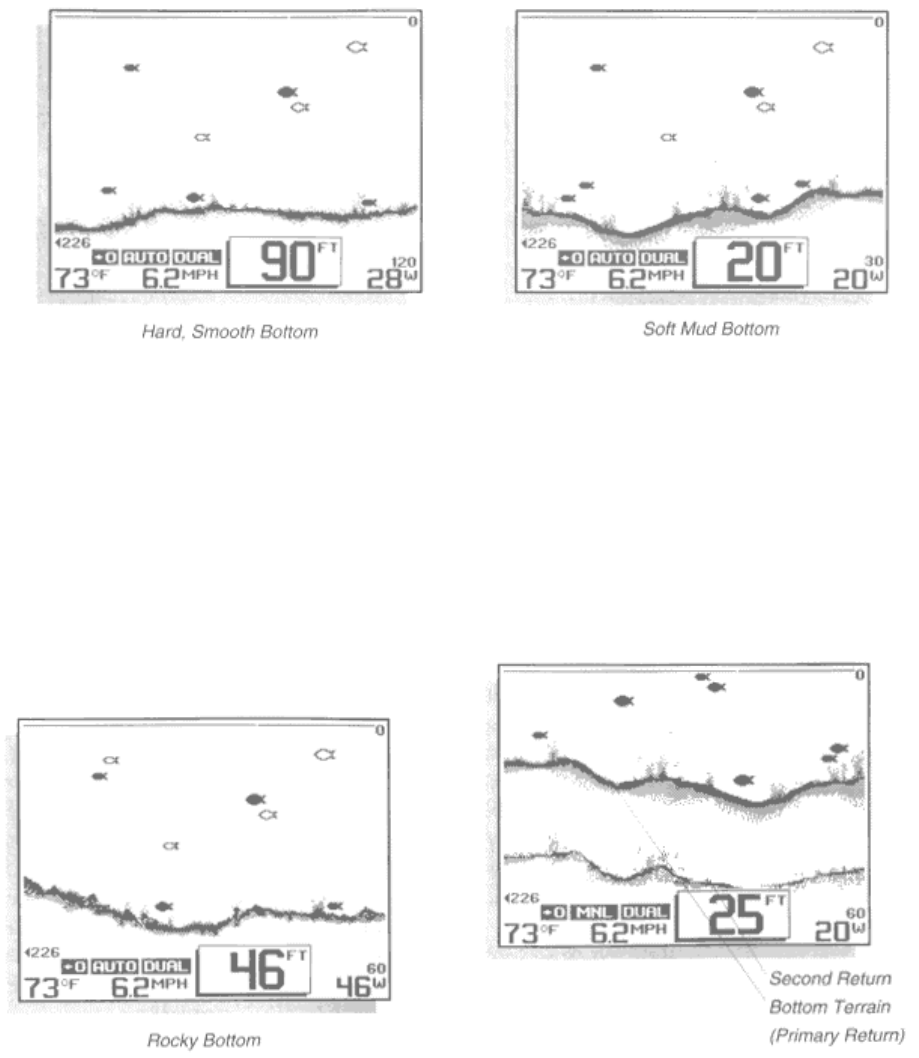
At power-up, the Wide Vision locates the bottom and adjusts the depth range to a setting most
appropriate for that depth. The bottom will be usually shown about 2/3 of the way down the display. The
Structure ID depiction of the bottom may appear differently in different situations. If the bottom is very
hard and smooth, the bottom depiction will be narrow and dense. If the bottom is mud or soft sand, the
bottom depiction will be thick and less dense. This indicates that much of the sonar signal is absorbed by
the soft bottom. If the bottom is rugged and varying, such as a rocky bottom, the depiction will be textured
and vary in density. Structure, such as submerged trees or brush, or other objects are clearly displayed
above the solid bottom return, in varying densities of pixelization. This bottom depiction is useful in
locating structure, by comparing relative density as well as depth.
The transmitted sonar signal travels downward, and is reflected back toward the surface by the bottom or
other objects for display on screen.
The signal does not stop there - it is reflected downward again by the surface of the water, and a weak
"second return" is usually visible if the depth range is sufficient to see it. A second return is shown in the
figure below. Some users use this second return as an indicator for setting the sensitivity bias.
If a target is detected between the surface and the bottom, it is displayed as a fish symbol. Depending on
the strength of the signal reflected from the object, one of three different size symbols is used. These
reflected signals are "normalized" for depth, so that a small fish does not appear to be a large fish if it is
close to the boat.
Since some species of fish tend to be better reflectors of sonar than others, the strength of return is not
always an accurate indicator of fish size, however, typically, the larger the fish, the larger the signal
return.



